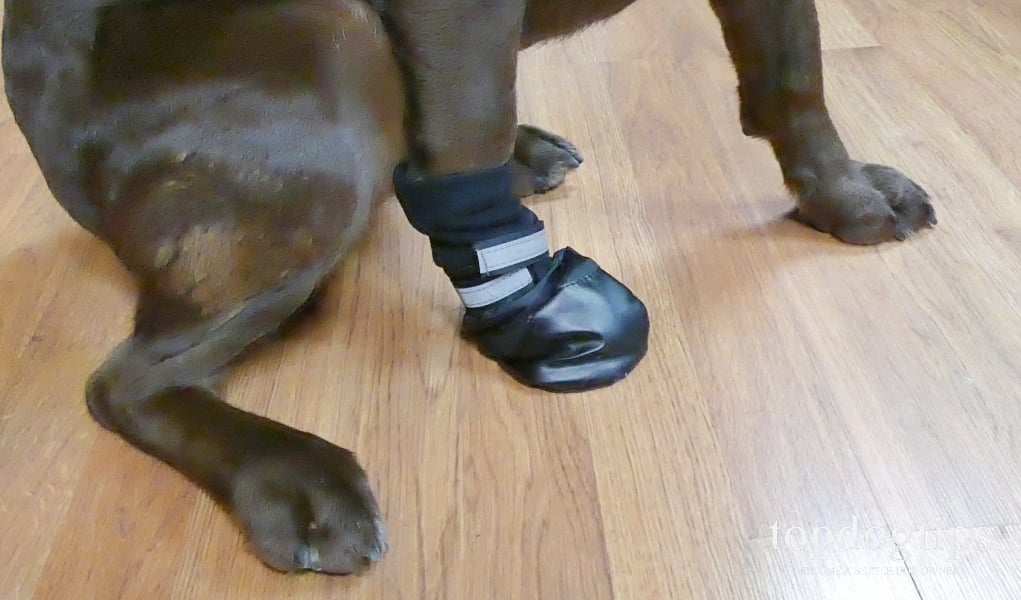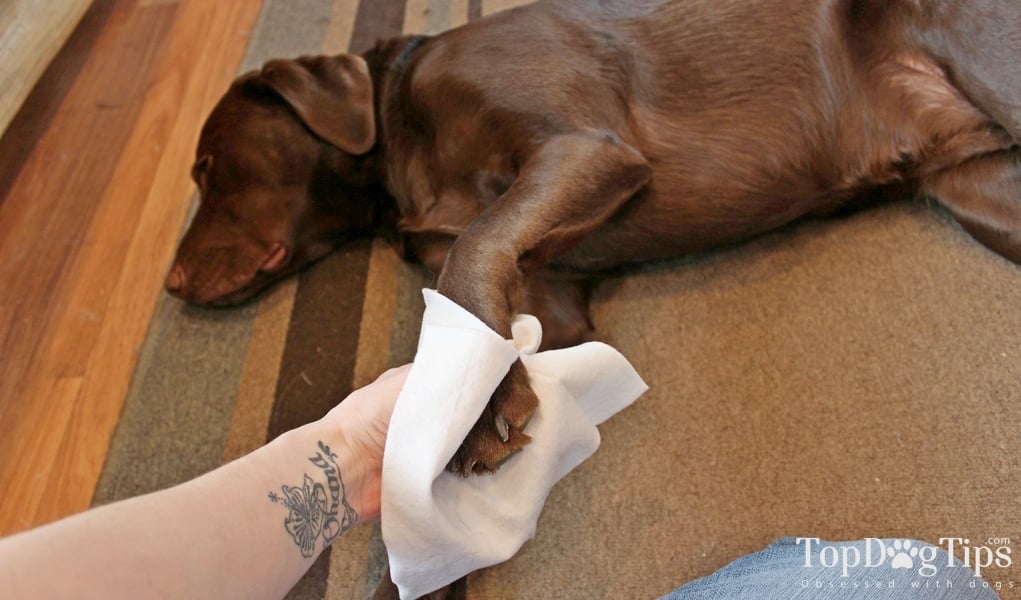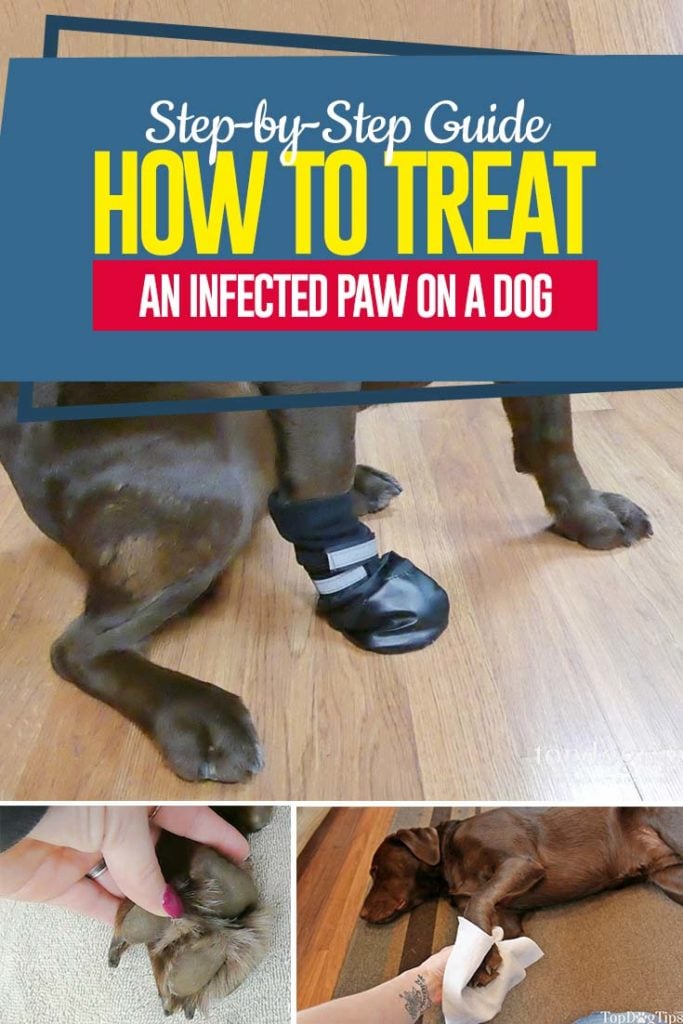Disclaimer: WE DO NOT RECOMMEND TREATING AN INFECTED PAW AT HOME AND THAT YOU SHOULD GO TO A VET IF YOUR DOG'S PAW IS INFECTED.
Many owners don't give enough thought to their dog's paw health, but paws are not immune to health problems.
If left untreated, an issue with a dog's paw could lead to a serious health issue.
Knowing how to treat an infected paw on a dog is crucial for those rare emergency situations.
Your dog's paw pads provide cushioning to reduce stress on their bones and joints, insulation in extreme weather and protection against rough terrain – among other things.
Paw pads also help with balance and stability, and their rough texture provides traction.
You may notice cuts, abrasions or tears on a dog's paws.
If you clean these wounds properly, keep them covered, and prevent the dog from licking the wound, they shouldn't become infected.
Check your dog's feet on a regular basis.
If you don't notice any issues until infection sets in, it's not too late. As long as the infection isn't severe, you should be able to treat the problem at home.
Keep your eyes open for these signs of an infected paw, as these may indicate that you need to seek veterinary advice and not attempt to treat at home.
- swelling
- limping
- puss/discharge
- crying or whimpering when putting weight on the paw
- not wanting to put weight on the paw
- foul smell
I'll show you how to treat an infected paw using a few cheap supplies that you probably already have in your medicine cabinet.
How to Treat an Infected Paw on a Dog
Supplies You'll Need
- Hydrogen peroxide
- Antibiotic ointment (or non-antibiotic, like Vetericyn or Sulfodene)
- Gauze
- Dog bootie or socks
Directions
Check your dog's paws after going on a walk over rough terrain.
Rocks, ice or crusty snow could easily cut open paw pads. Likewise, rocks and sticks could puncture the foot.
Hopefully, you will locate any cuts or abrasions quickly, before infection sets in.
When you suspect an infection, take care of it as quickly as possible because it can spread very fast.
If you believe the paw is seriously infected or has been infected for more than a few days, seek veterinary help immediately.
If you believe a home remedy is in order, begin by cleaning the wound thoroughly.
AGAIN, WE STRONGLY RECOMMEND YOU JUST GO TO YOUR VET TO GET IT TREATED AND PICK UP A PRESCRIPTION.
Flush the area with water to remove any dirt or debris. Next, flush the area with hydrogen peroxide.
You only need to use peroxide once.
It kills all bacteria in the wound, even the “good” bacteria that is helping to heal the area.
After you've flushed with peroxide the first time, use only water when cleaning the wound in the future.
Once the wound is clean, apply topical antibiotic ointment.
After applying the topical treatment, wrap the paw in gauze to keep it covered. You may also need to put a dog bootie or a sock on the infected paw to prevent your pooch from chewing at the gauze.
It is very important to apply an Elizabethan Collar to prevent your dog from from chewing off the sock or the bootie.
Swallowing these materials can lead to a very dangerous intestinal obstruction. -Dr. Myles Rowley DVM

If your pup has a sock or a bootie on the paw, make sure to keep the paw clean and dry.
Check the paw every 24 hours, and if the wound does not appear significantly improved within 48 hours, then you will need to call your veterinarian.
If it is healing, gradually increase the time you leave the paw uncovered.
Keep an eye on your pet to ensure they don't lick the area.
READ NEXT: The Ultimate Guide of First Aid for Dogs
Disclosure: We may earn affiliate commissions at no cost to you from the links on this page. This did not affect our assessment of products. Read more here and find full disclosure here.














